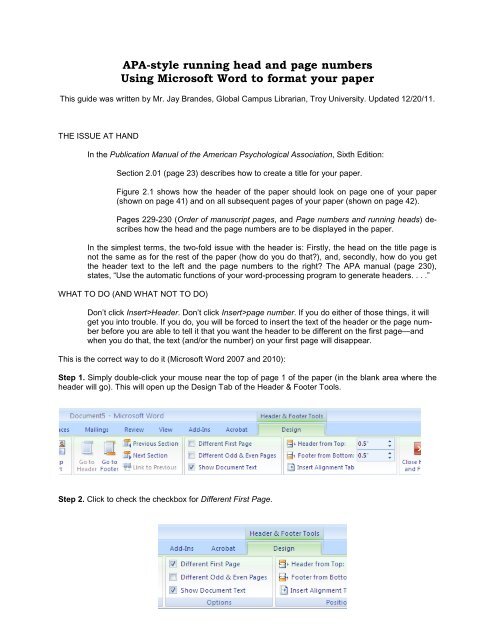

Click the Page Number icon in the Header & Footer section, and select Top of Page, Bottom of Page, Page Margins, or Current Position, depending on. The easiest way to access this is to: Click the Insert tab in the ribbon. Format your header or footer text as you would format normal text in your document. Both Word 2013/2016 and Word Online have the capability to add page numbers to headers, footers, or margins of documents.(I normally just choose Plain Number since I'm going to do my own formatting anyway.) From the resulting options, select the page number format that most closely corresponds to what you want to see. Microsoft Word will renumber your pages automatically if you add, insert or delete any pages. Click on the Page Number tool and then click Current Position.In the header or footer, type the word Page followed by a space.You can also display the Insert tab of the ribbon, click the Header or Footer tools (as desired), and then choose Edit Header or Edit Footer (as appropriate). You can do this by double-clicking within the header or footer areas. Open the header or footer area of the page you are viewing.Position the insertion point in the section of your document that you want to include page numbers.To add page numbers in your headers and footers, follow these steps: For instance, you may want a page number to say, " " (special formatting with the word Page before the actual page number). These types of page numbers can be rather fancy, if you like. If the standard, run-of-the-mill page number does not fit your discriminating tastes, you may want to add page numbers to your headers or footers yourself. The page number you choose is inserted at the location of your insertion point. This also works the other way around.If you already have headers and footers defined for your document, you can add a page number by simply editing the header or footer and then using one of the choices available by choosing the Insert tab of the ribbon, clicking the Page Number tool, and then choosing Current Position.

Now, when you edit the header of an odd page it will apply to all odd pages but it won't affect the even pages. In the Header & Footer Tools tab, check Different Odd & Even Pages. As a familiar example, you could have the document title in the odd page header and the heading title on the even pages. You need to check only one option to have different headers on odd & even pages: You probably have seen this one in different documents and even books. Once you check this option, the stuff you put in the header of the first page won't appear on other pages and conversely, if you change the header of any other page it won't affect the first page.
#MICROSOFT WORD RUNNING HEADER AND PAGE NUMBER HOW TO#
In the Header & Footer Tools tab, in the Options section, check Different First Page. It can be tricky to make the header of the first page different with the term 'Running head.' The video below by Allen (2020) shows how to create a running header in Microsoft Word, according to APA style 7th edition. So far, anything that you add to the header will appear on every other page but what if you don't want the header on your first page to appear on every page in the document? You might want to have other content in the header of other pages or anything else. This tab allows you to change options related to the header and also insert components other than plain text to it.

The Header & Footer Tools tab activates whenever you're editing the header or the footer of a page.


 0 kommentar(er)
0 kommentar(er)
